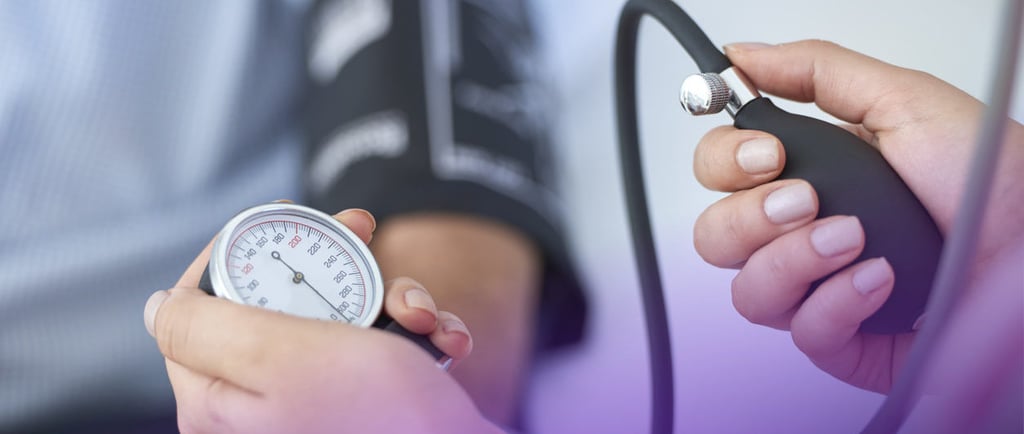How to Lower Blood Pressure Naturally: 10 Evidence-Backed Strategies for 2025
Diagnosed with high blood pressure or looking to prevent it? You can take control of your heart health naturally. This definitive guide details 10 proven, effective lifestyle changes—from the DASH diet and stress management to home monitoring—that can significantly lower your blood pressure and reduce your risk of heart attack and stroke.
SOCIAL


High blood pressure, or hypertension, is often called the "silent killer" for a reason. Affecting nearly half of all adults, it operates stealthily, damaging your blood vessels, heart, and kidneys for years without any obvious symptoms. Left unmanaged, it dramatically increases your risk of catastrophic health events, including heart attacks, strokes, and heart failure.
But here is the most important takeaway: a hypertension diagnosis is not an inevitable life sentence. It is a powerful warning sign and an opportunity to take control of your health. While medication is crucial for many, the foundation of managing blood pressure is built on lifestyle modification. Often, these changes are so effective that they can reduce or even eliminate the need for pharmaceutical intervention.
This comprehensive guide moves beyond basic advice to explore the how and why behind 10 evidence-backed, natural strategies to lower your blood pressure. We will delve into the science, provide actionable steps, and empower you to make lasting changes for a healthier heart.
Understanding the "Why": The Mechanics of Blood Pressure
Before diving into the solutions, it helps to understand the problem. Blood pressure is the force exerted by your blood against the walls of your arteries. Two factors create this pressure:
The amount of blood your heart pumps.
The resistance to blood flow in your arteries.
Hypertension occurs when this force is consistently too high. Lifestyle factors like a high-sodium diet, lack of activity, and stress can cause your arteries to constrict (increasing resistance) or your body to retain fluid (increasing volume), both of which drive up pressure.
The 10-Point Plan for Natural Blood Pressure Management
1. Achieve and Maintain a Healthy Weight
The Science: Excess body weight, particularly around the waist (visceral fat), forces your heart to work much harder to pump blood throughout your body. This fat tissue is also metabolically active, releasing hormones that can cause blood vessels to constrict and promote sodium retention.
Actionable Steps:
Focus on Loss, Not a Number: Even a modest weight loss of 5-10% of your total body weight can have a profound impact on your blood pressure readings.
Measure Your Waist: Carrying weight around the abdomen is a significant risk factor. Men should aim for a waist circumference below 40 inches, and women below 35 inches.
Set Realistic Goals: Aim for a gradual loss of 1-2 pounds per week through sustainable changes, not crash diets.
2. Adopt the DASH Diet (Dietary Approaches to Stop Hypertension)
The Science: The DASH diet is consistently ranked as one of the best diets for heart health. It emphasizes foods rich in potassium, calcium, magnesium, and fiber—nutrients that work in concert to help relax blood vessels and excrete excess sodium.
Actionable Steps:
Pile on the Produce: Aim for 4-5 servings of fruits and 4-5 servings of vegetables daily. Think leafy greens, berries, bananas, and sweet potatoes.
Choose Whole Grains: Switch to brown rice, quinoa, oats, and whole-wheat bread instead of refined carbohydrates.
Incorporate Low-Fat Dairy: Options like yogurt and milk provide calcium and protein.
Include Lean Proteins: Focus on fish, poultry, beans, and nuts. Fatty fish like salmon are rich in omega-3s, which are anti-inflammatory.
3. Drastically Reduce Sodium Intake
The Science: Sodium plays a direct role in hypertension by causing your body to retain water. This extra water increases the total volume of blood in your bloodstream, which in turn increases the pressure on your artery walls.
Actionable Steps:
Read Labels Diligently: The biggest source of sodium isn't your salt shaker; it's processed, packaged, and restaurant foods. Aim for less than 2,300 mg per day, with an ideal limit of 1,500 mg for most adults.
Cook at Home: Preparing your own meals gives you complete control over how much salt is added.
Flavor with Herbs and Spices: Replace salt with garlic, onion powder, herbs, citrus juice, and vinegar to create delicious, flavorful food without the sodium.
4. Commit to Regular Aerobic Exercise
The Science: Regular physical activity strengthens your heart. A stronger heart can pump more blood with less effort, which decreases the force on your arteries. Exercise also helps manage weight and reduce stress.
Actionable Steps:
Aim for 150 Minutes: The American Heart Association recommends at least 150 minutes of moderate-intensity aerobic exercise (like brisk walking, cycling, or swimming) per week. That breaks down to 30 minutes, 5 days a week.
Start Slow: If you're new to exercise, even 10-minute bouts of walking throughout the day can make a difference. Consistency is key.
Add Strength Training: Include muscle-strengthening activities at least two days per week. Building muscle also improves metabolic health.
5. Limit Alcohol Consumption
The Science: While some studies suggest small amounts of alcohol might be beneficial, excessive drinking is unequivocally harmful. Alcohol can raise blood pressure by stimulating the release of hormones that constrict blood vessels.
Actionable Steps:
Follow the Guidelines: Stick to no more than one drink per day for women and two drinks per day for men. (One drink = 12 oz beer, 5 oz wine, or 1.5 oz distilled spirits).
Be Honest About Portions: A large glass of wine can easily constitute two or three standard drinks.
6. Eliminate Tobacco and Nicotine Exposure
The Science: The chemicals in tobacco smoke damage the lining of your artery walls, causing them to become inflamed and narrow. This increases blood pressure and heart rate immediately. Secondhand smoke also carries these risks.
Actionable Steps:
Quit Completely: There is no safe level of exposure. Quitting is the single best thing you can do for your heart health.
Seek Support: Utilize quitlines, apps, counseling, or nicotine replacement therapy to increase your chances of success. The benefits begin within minutes of your last cigarette.
7. Develop a Robust Stress Management Toolkit
The Science: Chronic stress puts your body in a constant "fight-or-flight" mode, leading to elevated heart rate and constricted blood vessels. While stress itself might not cause long-term hypertension, it can lead to behaviors that do (overeating, poor sleep, drinking).
Actionable Steps:
Practice Mindfulness: Meditation, deep breathing exercises, and yoga are proven to activate the body's relaxation response and lower stress hormones.
Make Time for Hobbies: Engage in activities that bring you joy and help you disconnect, whether it's gardening, reading, or listening to music.
Reframe Challenges: Cognitive-behavioral techniques can help you manage your psychological response to stressful situations.
8. Prioritize Quality Sleep
The Science: During sleep, your body undergoes critical repair processes. Poor sleep (less than 6 hours regularly) disrupts hormones that regulate stress and metabolism, which can lead to higher blood pressure.
Actionable Steps:
Aim for 7-8 Hours: Make sleep a non-negotiable part of your health routine.
Establish a Routine: Go to bed and wake up at the same time every day, even on weekends.
Create a Restful Environment: Keep your bedroom cool, dark, and quiet. Avoid screens for at least an hour before bed.
9. Monitor Your Blood Pressure at Home
The Science: Home monitoring provides a clearer picture of your blood pressure over time, away from the potential stress of a doctor's office ("white coat syndrome"). It allows you and your doctor to see if your lifestyle changes are working and make informed decisions about your care.
Actionable Steps:
Invest in a Validated Monitor: Choose an automatic, cuff-style monitor that fits your upper arm for the most accurate readings.
Establish a Routine: Check your blood pressure at the same times each day, such as morning and evening, while seated and rested.
Keep a Log: Record your numbers and share them with your doctor during appointments.
10. Partner with Your Healthcare Provider
The Science: Lifestyle changes are powerful, but they are not always sufficient on their own. Genetics and other factors play a role. Your doctor is your essential partner in creating a holistic and effective treatment plan.
Actionable Steps:
Be Open and Honest: Discuss your lifestyle habits, challenges, and home monitoring results openly.
Adhere to Prescriptions: If medication is prescribed, take it exactly as directed. Do not stop taking it without consulting your doctor, even if you feel better.
Attend Regular Check-ups: Continue to see your doctor for ongoing management and to adjust your plan as needed.
